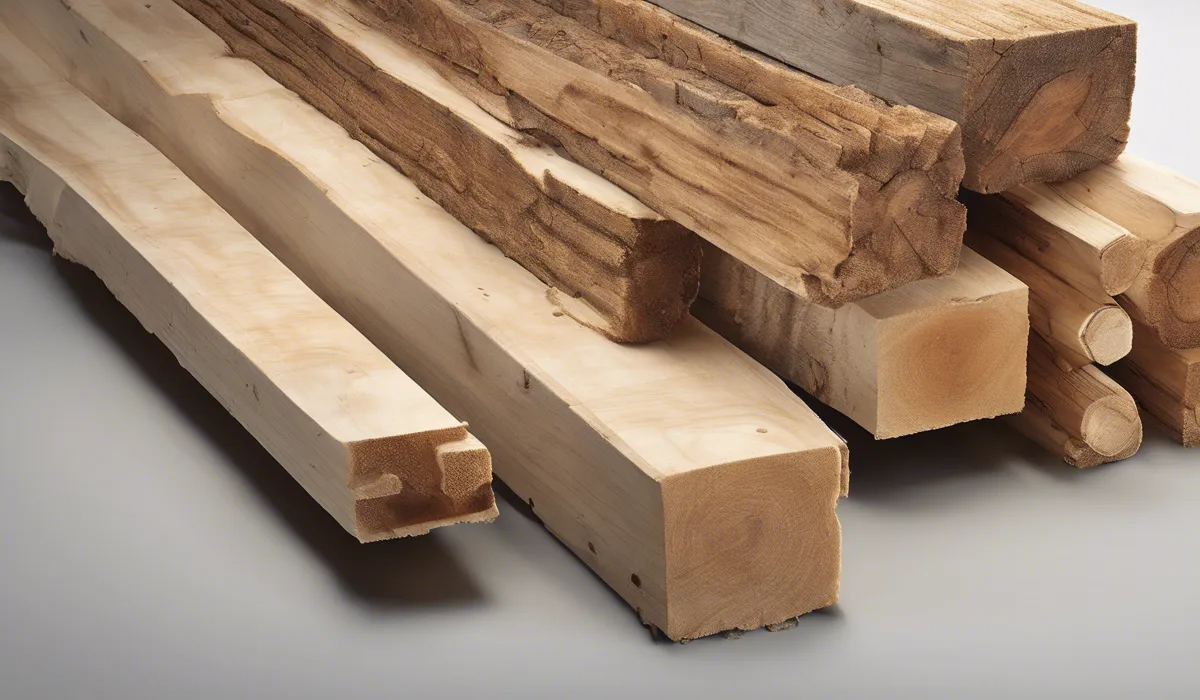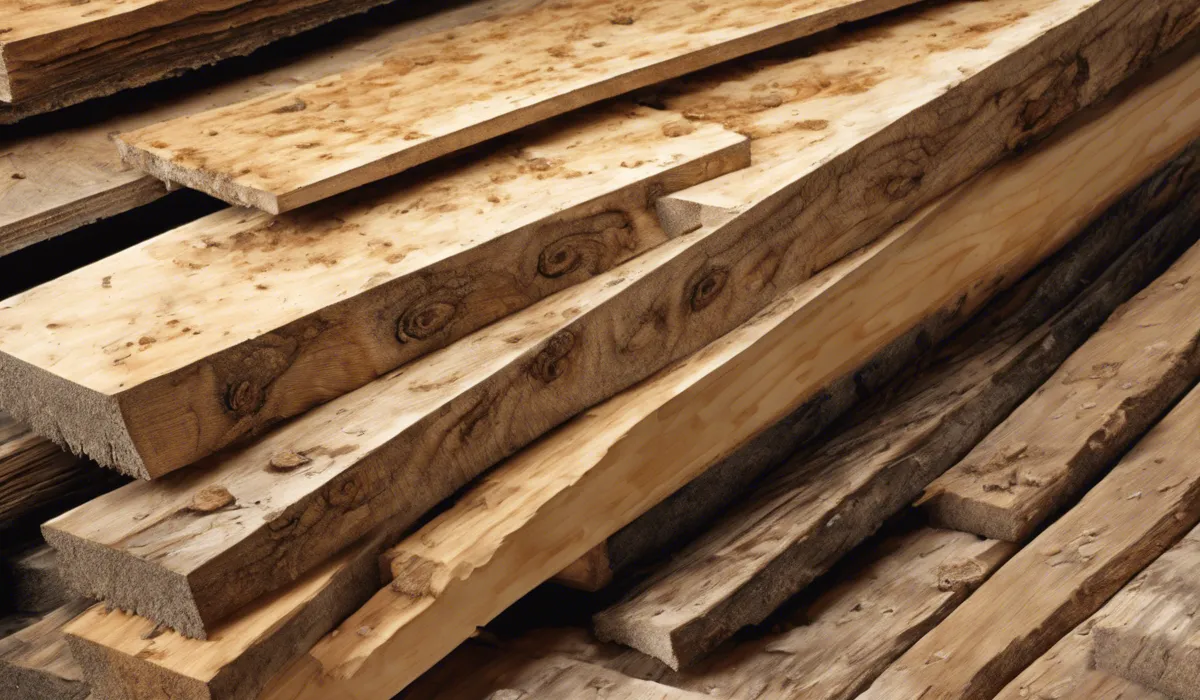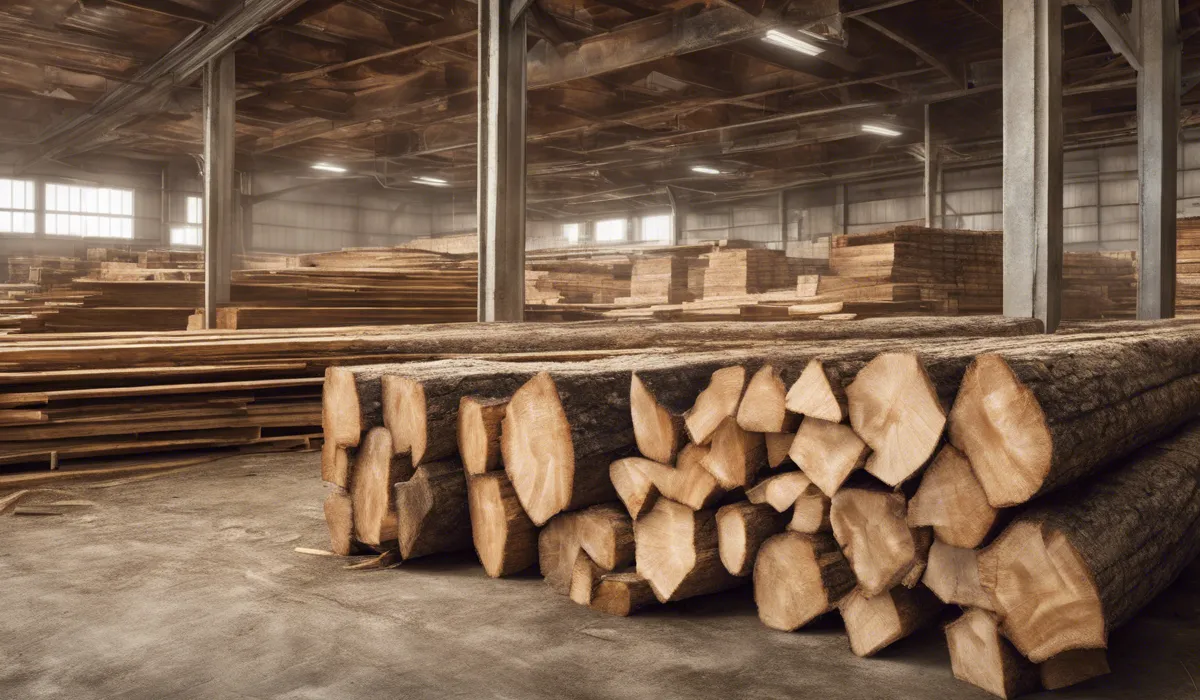Lumber mold can be dangerous, particularly for individuals with allergies or compromised immune systems. It can cause respiratory issues and worsen allergies. It’s essential to address lumber mold in damp areas promptly to prevent health risks and structural damage.
Understanding Lumber Mold

What Is Mold?
Mold is a type of fungus that can grow both indoors and outdoors. It reproduces by releasing tiny spores that float through the air and settle on surfaces. Mold thrives in moist, warm, and humid conditions.
When it lands on a suitable surface, such as wood, it can start to grow and digest the material, causing damage over time.
Common Molds on Lumber
Lumber can harbor a variety of mold species. The most common types include Aspergillus, Penicillium, and Cladosporium.
These molds can appear as spots that are green, white, black, or even blue. Knowing which type of mold is present can help in effectively treating the problem.
Conditions for Mold Growth
Mold on lumber is most likely to occur in environments that are damp, have high humidity, and lack adequate airflow.
This can happen during improper storage or when lumber is installed in moisture-prone areas without proper treatment or protection.
Distinguishing Mold from Other Fungi
Not all fungal growth on wood is mold. Some wood discolorations might be due to blue stain fungus or mildew.
Mold typically has a fuzzy texture and can be easily disturbed, sending spores into the air, while other fungi might be more embedded in the wood’s surface.
Health Implications of Mold on Lumber

Risks Associated with Mold Exposure
Exposure to mold can cause various health issues, especially when the spores are inhaled.
Symptoms might include coughing, sneezing, eye irritation, and skin rashes. In severe cases, it can lead to more significant respiratory problems.
Concerns for Sensitive Individuals
People with allergies, asthma, or compromised immune systems are particularly at risk from mold exposure.
For these individuals, mold can exacerbate their conditions, leading to increased symptoms and even triggering asthma attacks.
Impact on Indoor Air Quality
Mold spores that become airborne can significantly deteriorate indoor air quality. Continual inhalation of these spores can affect everyone’s health in the household, not just those with pre-existing conditions.
The Long-Term Effects of Exposure
Chronic mold exposure can lead to long-term health issues, including persistent respiratory infections and hypersensitivity pneumonitis. It is crucial to address mold issues promptly to prevent these outcomes.
Prevention and Remediation of Lumber Mold

Storage Tips to Prevent Mold
Proper storage of lumber is essential to prevent mold growth. Lumber should be kept dry, off the ground, and with sufficient airflow around it. Covering wood with a tarp can protect it from rain while allowing air movement.
Moisture Control and Ventilation
Maintaining low humidity levels and good ventilation in areas where lumber is used can prevent mold growth. Use dehumidifiers and fans in prone areas to keep the air dry and moving.
Mold Cleaning and Treatment Options
Small mold infestations on lumber can often be treated with DIY solutions like vinegar or bleach.
However, for larger areas or if the mold has penetrated deeply into the wood, professional remediation may be necessary.
Safety During Mold Removal
When removing mold, it’s important to wear protective equipment such as gloves, masks, and goggles. This will help prevent inhalation of spores and contact with skin.
Replace vs. Clean
If the lumber is structurally compromised or the mold problem is extensive, it may be safer and more cost-effective to replace the affected wood rather than attempt to clean it.
FAQs About Lumber Mold Dangers
Is lumber mold harmful to everyone?
Lumber mold can be harmful, especially for people with allergies or compromised immune systems, as it can cause respiratory issues and worsen allergies.
What health risks does lumber mold pose?
Lumber mold can cause respiratory issues and exacerbate allergies, posing significant health risks particularly for sensitive individuals.
Can lumber mold affect the structural integrity of a building?
Yes, if not addressed promptly, lumber mold can lead to structural damage by breaking down the wood it grows on.
How quickly should lumber mold be addressed?
Lumber mold should be addressed as soon as it’s found, especially in damp areas, to prevent health risks and structural damage.
Can cleaning lumber mold prevent health issues?
Properly cleaning and removing lumber mold can help prevent the health issues associated with its presence.
Final Thoughts
Lumber mold poses significant health risks, especially for those with allergies or weakened immune systems, leading to respiratory complications and exacerbated allergy symptoms.
Prompt remediation in moist environments is crucial to mitigate these health concerns and avert potential structural damage.
